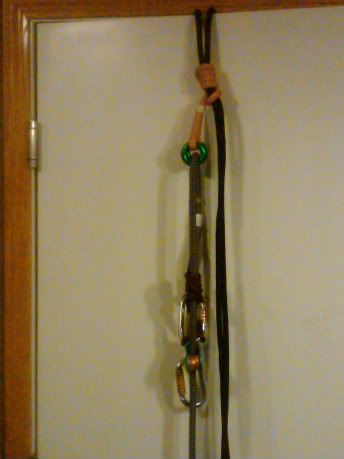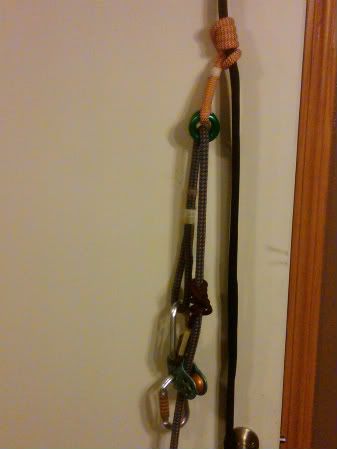A few things come to mind regarding Single Rope Technique, some of which I discussed lightly in another topic today --
SRT was developed by cavers and spelunkers, rock climbers as a rope access system. I have no doubts that it was designed as access only, not envisioned being used for work positioning.
the thing about srt is that it tends to function much better on a static rope (no stretch, no bounce) but a static rope is not necessarily appropriate for work positioning, and certainly not appropriate for fall arrest.
If you check out rock climbing and the lead climber methods, they climb the rock/wall, and use a dynamic rope in case the need for fall arrest arises -- they are not climbing the rope, they are climbing the wall. And you wouldn't want to use a dynamic rope in a rope access type of situation -- they are very stretchy, very bouncy. To the extent that you would be very frustrated if you tried using a dynamic rock climbing rope for access in a tree, which I have experimented with.
srt came/comes into play for a rock climber/caver/spelunker when they are trying to access another point from which to do a wall climb, abseil, etc., using the srt to bypass areas they couldn't reach by climbing, or gaining access to a more desirable location to begin a climb from.
So that's the thing, static ropes perform best for srt, but really shouldn't be relied upon for fall arrest, and if you've ever fallen on a static line, you know it -- it hurts, shakes the hell out of you. A fall on a dynamic rope wont shock you a whole lot, but the dynamic rope is going to bound and stretch, making it less desirable to ascend on.
This is also true of the difference of an approved fall arrest harness vs a work positioning harness -- our tree climbing saddles are work positioning harness, they are not approved for fall arrest.
Additionally, a safety consideration is that using srt would most of the time require that the branch your line is hanging on, be capable of supporting double your weight, if the standing part of your line is anchored to the base of the tree. In drt, each side of the line is supporting half of your weight, so theoretically, it is less sensitive to movement as well.
As far as actual work goes, on srt, for a 70 ascent, you pull 70ft of rope thru your gear; conversely, for drt on a 70ft ascent, you must pull 140 ft of line thru your gear.
IMO for efficiencies' sake, along with consideration of the safest methods/best practices, that's why those people are switching after the asend, they use the srt for access, and then switch to drt for work positioning
I do something different everyday, just depends on the tree, heres a pic that enables me to footlock and drt using the same TIP






